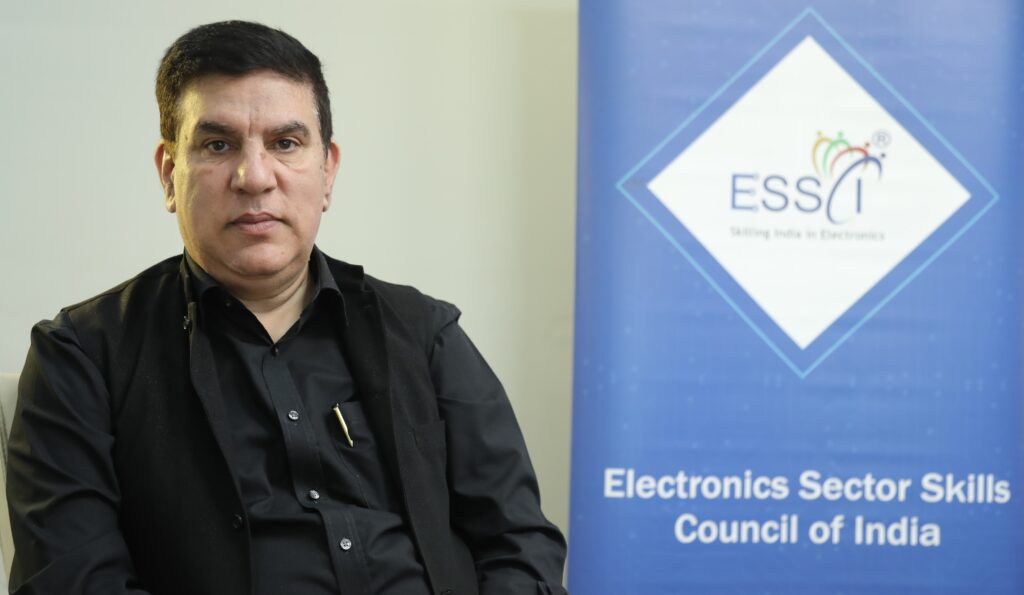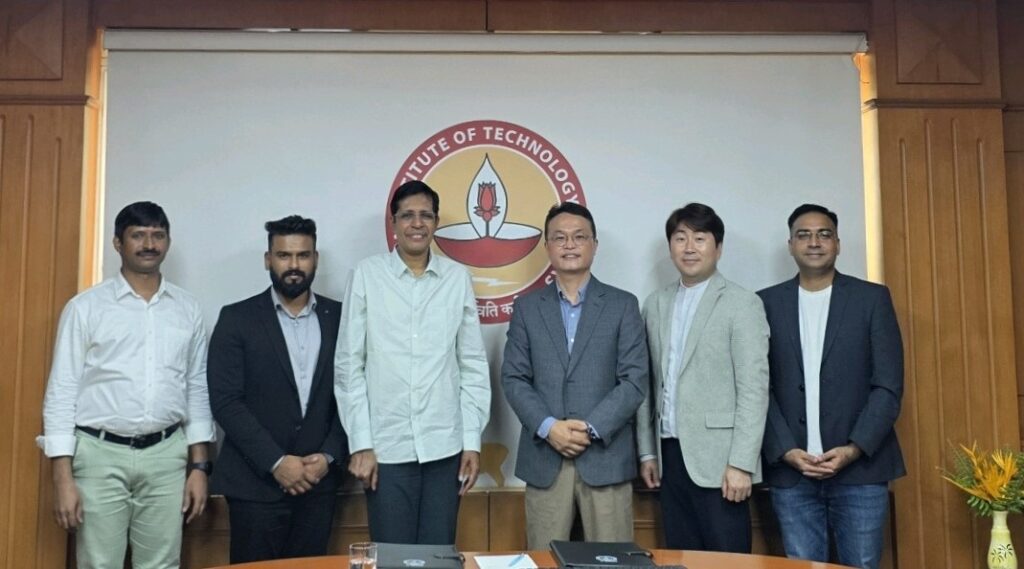
By Mr. Saleem Ahmed, Officiating Head, ESSCI
In the next ten years, India will witness a tectonic shift in its technological landscape, one that will decisively shape the nation’s economic destiny and global standing. At the heart of this transformation lies the semiconductor industry, often referred to as the “new oil” in the global economy. For Indian engineers, the semiconductor revolution isn’t just a story of factories and chips—it’s a gateway to high-value, future-ready careers that promise innovation, growth, and national impact.
With multiple large-scale semiconductor fabrication and assembly projects underway, and policy support at an all-time high, semiconductor jobs are rapidly becoming the next big thing for engineering talent in India. And at the forefront of this workforce transformation stands the Electronics Sector Skills Council of India (ESSCI)—tasked with equipping the Indian workforce for this high-tech future.
A Nation on the Verge of a Chip Revolution
India’s dependence on imported chips—used in everything from mobile phones to fighter jets—has long been a strategic vulnerability. But that reality is now changing. Recently Union Cabinet’s approved approved a new semiconductor plant in Uttar Pradesh’s Jewar to be jointly set up by HCL Group and Foxconn. The newly approved facility will come up at an investment of Rs 3,700 crore.
This is the sixth unit approved under the India Semiconductor Mission, with five semiconductor facilities in advanced stages of construction. Three of these units—by Micron Technologies, Kaynes Technologies and a combination of CG Power-Renesas Electronics and Star Microelectronics—are based in Sanand, Gujarat. The Tata Group is building one semiconductor facility in Dholera, Gujarat and another in Assam.
These developments are backed by the Government of India’s India Semiconductor Mission (ISM), a ₹76,000 crore policy initiative that provides incentives for design, manufacturing, and packaging of semiconductor chips.
This growing ecosystem will need a massive talent pool—and that’s where India’s engineers come in.
Why Semiconductors Are a Game-Changer for Engineers
Semiconductors power almost every modern device—from smartphones and laptops to electric vehicles, smart appliances, 5G infrastructure, defense systems, and even satellites. As the world shifts toward AI, IoT, and smart mobility, the demand for chips is set to explode. According to recent estimates, India’s semiconductor market will triple in size—from US$22.7 billion in 2019 to over US$80 billion by 2028.
This explosion is not just about demand—it’s about job creation.
According to ESSCI’s analysis, the semiconductor industry is set to witness a dramatic rise in employment demand. The sector, which is projected to employ 1.70 lakh individuals by 2025, is expected to rise to 1.87 lakh in 2026, and add a total of 1.03 lakh new jobs by 2030. This includes roles in chip design, fabrication, testing, quality control, equipment maintenance, and advanced manufacturing processes.
The rapid expansion of this sector has created an urgent need for a highly skilled workforce. ESSCI is committed to bridging the skill gap through targeted training programs, collaborating with industry and academia to equip young professionals with expertise in chip design, fabrication, and advanced packaging. These initiatives will empower the next generation to drive India’s semiconductor revolution.
Such roles are not only high-paying but also globally portable, offering Indian engineers access to both domestic and international job markets.
The Many Doors Semiconductor Jobs Open
The semiconductor industry is uniquely interdisciplinary, requiring expertise in electronics, mechanical, chemical, computer science, materials engineering, and more. Here’s a breakdown of the top career tracks Indian engineers can pursue:
- Design Engineers
Design engineers work on creating the architecture and layout of chips. They use Electronic Design Automation (EDA) tools to ensure chips are efficient, reliable, and ready for fabrication.
- Process Engineers
These engineers fine-tune the manufacturing process, often working in cleanroom environments. They handle wafer processing, lithography, etching, doping, and deposition.
- Packaging and Testing Experts
Once chips are fabricated, they need to be tested, assembled, and packaged. Engineers in this field ensure performance and durability under various operating conditions.
- R&D Scientists
Research roles offer cutting-edge work in developing new semiconductor materials like gallium nitride or silicon carbide, and technologies like FinFET or EUV lithography.
- Equipment and Maintenance Technicians
Fabrication units run on precision equipment that needs constant monitoring and maintenance—critical work for mechanical and electronics engineers.
- Quality and Safety Officers
Given the strict standards in chip manufacturing, QA engineers ensure compliance, while safety experts handle protocols in chemical and electrical hazards.
Enter ESSCI: Building the Backbone of India’s Semiconductor Workforce
With this exponential growth comes the challenge of creating a skilled and job-ready workforce. The Electronics Sector Skills Council of India (ESSCI), under the aegis of the Ministry of Skill Development and Entrepreneurship, plays a crucial role in bridging this gap.
ESSCI has already developed 25 NSQF-aligned qualifications for semiconductor design, packaging, and manufacturing. These qualifications are designed to cater to:
- Engineering graduates seeking specialization
- Diploma and ITI students entering the job market
- Working professionals seeking upskilling or domain switch
ESSCI offers focused a range of qualifications covering the complete value chain of the semiconductor industry. Short Term courses such as VLSI Design Engineer, concentrating on designing SOC-module functions using software, Embedded Full Stack Engineer, IoT Hardware Analyst are some of the top courses offered for pursuing engineering graduates to gain the knowledge of EDA Tools and system design. ESSCI also provides qualifications for Wafer Back Grinding Engineer and Wafer Dicing Engineer, specialising in wafer manufacturing tasks which can be taught to ITI / Diploma students. ESSCI also has foundation / upskilling courses in the field of Nano Science & Advance Nano Science which is also in great demand. Also, there are some basic courses on the Industrial Safety – Electrical & Hazchem which are very crucial & important for the industrial safety requirements. The complete list of our qualifications along with their model curriculum are all uploaded on our website – https://essc-india.org/qualification-packs.php
Career Opportunities in Semiconductor Technology:
As the semiconductor industry evolves in response to these mega trends, it creates exciting career opportunities for professionals across the value chain – designing, fabrication and packaging. From semiconductor design and manufacturing to research and development, there is a growing demand for skilled professionals who can innovate and drive technological advancements in the industry.
The sector is expected to see more than 800,000 to 1 million job openings over the next five years, says staffing company Randstad. The government recently approved $15 billion worth of investments into the sector including from the Tata group. India’s burgeoning semiconductor sector is facing a surge in demand for talent, fuelled by new investments and the government’s ambitious plan to transform the country into a chip manufacturing hub.
- Semiconductor Design Engineer:Semiconductor design engineers play a crucial role in developing the architecture and circuitry of semiconductor chips. They utilize tools like Electronic Design Automation (EDA) software and simulation tools to design and optimize chip layouts for performance, power efficiency, and manufacturability.
- Process Engineer:Process engineers are responsible for developing and optimizing semiconductor manufacturing processes. They work closely with equipment vendors and manufacturing teams to ensure the smooth operation of semiconductor fabrication facilities, improve yield rates, and reduce production costs.
- Research Scientist:Research scientists in the semiconductor industry focus on exploring new materials, devices, and technologies to push the boundaries of semiconductor innovation. They conduct experiments, analyze data, and collaborate with cross-functional teams to develop next-generation semiconductor solutions.
- Material Engineers:Material engineers in the semiconductor industry are pivotal in researching, selecting, and optimizing the materials used in semiconductor device fabrication. Their expertise spans a wide range of materials, including silicon, gallium arsenide, and various compound semiconductors. Material engineers work closely with semiconductor design teams to ensure that the chosen materials meet the performance requirements of the intended applications while also considering factors such as cost, scalability, and reliability. Additionally, they play a crucial role in developing new materials and processes to push the boundaries of semiconductor technology, enabling advancements in areas such as miniaturization, power efficiency, and functionality.
- Product Marketing Manager:Product marketing managers play a vital role in bringing semiconductor products to market. They conduct market research, develop marketing strategies, and collaborate with sales teams to promote semiconductor products and drive revenue growth.
- Quality Assurance Engineer:Quality assurance engineers ensure that semiconductor products meet the highest standards of quality and reliability. They develop and implement test plans, conduct performance testing, and analyze data to identify and address any issues or defects in semiconductor products.
- Packaging experts:Packaging experts in the semiconductor industry are instrumental in developing and implementing packaging solutions that safeguard semiconductor chips. Their role entails meticulous selection of packaging materials, designing efficient packaging structures to ensure protection against environmental factors and mechanical stresses, and optimizing designs for thermal management and electrical performance. They collaborate closely with design and manufacturing teams to ensure that packaging solutions meet stringent industry standards while balancing factors such as cost-effectiveness and manufacturability.
- Clean room specialists:They play a pivotal role in maintaining the pristine conditions necessary for semiconductor fabrication processes. They are responsible for meticulously managing and monitoring cleanroom environments to prevent contamination that could compromise the quality and reliability of semiconductor devices. Clean room specialists enforce strict cleanliness protocols, perform regular inspections, and oversee cleaning procedures to ensure compliance with industry standards and regulations. Their expertise ensures that semiconductor manufacturing facilities operate in controlled environments conducive to high-quality production.
- Machine maintenance technicians:They are essential for sustaining the operational efficiency and reliability of semiconductor manufacturing equipment. Their responsibilities include conducting routine maintenance tasks, performing diagnostics, troubleshooting equipment issues, and executing repairs as needed to minimize downtime and optimize production throughput. Machine maintenance technicians also play a crucial role in implementing preventive maintenance schedules, identifying opportunities for equipment upgrades or optimizations, and ensuring compliance with safety regulations and operational standards. Their expertise contributes to the overall efficiency and longevity of semiconductor manufacturing operations.
- Safety protocol checkers:These people are integral to maintaining a safe and secure work environment within semiconductor manufacturing facilities. They are responsible for enforcing safety regulations, conducting regular inspections to identify potential hazards, and implementing corrective measures to mitigate risks and prevent accidents. Safety protocol checkers also play a vital role in developing and implementing safety training programs, conducting safety audits, and promoting a culture of safety awareness among employees. Their diligence and vigilance help to safeguard the well-being of personnel, protect semiconductor manufacturing equipment, and maintain the integrity of semiconductor processes.
Career Opportunities Across the Ecosystem
- Global Semiconductor Giants: Intel, Micron, AMD, Qualcomm, NXP
- Indian Startups & Design Houses: Saankhya Labs, Steradian Semiconductors, Signalchip
- Manufacturing Units: Tata Group, Vedanta-Foxconn, ISMC
- Government & Defense: DRDO, ISRO, SCL (Semiconductor Lab)
- Academia & R&D: IITs, IIITs, National Labs
India’s Policy Ecosystem: Creating the Right Conditions
India’s semiconductor journey isn’t just market-driven—it’s backed by clear, consistent policy action:
- Production Linked Incentive (PLI) Scheme to support manufacturers.
- Design Linked Incentive (DLI) Scheme for fabless startups and institutions.
- Modernization of the Semiconductor Laboratory (SCL) in Mohali into a full-fledged fab.
- State-level incentives, like Odisha’s offer of 25% subsidy on capex for fabs and 20% for fabless companies.
Moreover, global giants like Applied Materials, Lam Research, and Samsung Semiconductor India Research (SSIR) are expanding operations in India—indicating long-term confidence in India’s talent and policy framework.
A Strategic Moment for Indian Youth
The rise of India’s semiconductor sector presents a rare, perhaps once-in-a-generation, opportunity. Engineers who upskill today can become:
- The designers of India’s next chip
- The technicians behind India’s first fab line
- The entrepreneurs launching fabless startups
- The leaders driving India’s tech sovereignty
At a time when countries are scrambling to secure chip supply chains, India is carving a unique place for itself—not just as a consumer but as a creator. But this vision hinges on talent.
That’s why engineers—especially young graduates and final-year students—must look seriously at semiconductors. With government support, ESSCI’s training programs, and private sector momentum, the time to act is now.
Conclusion: From Potential to Powerhouse
India is no longer at the sidelines of the global chip race. With strong policy, infrastructure investment, and a strategic location, it is emerging as a serious contender. But no chip factory can run without engineers. The success of India’s semiconductor mission will ultimately depend on its people—its skilled, driven, and future-ready engineers.
 With this partnership, Ascendion is taking AI to the next level, ensuring organizations not only adopt AI but fully integrate it into their workflows to drive real, measurable impact. By modernizing IT operations, enhancing employee and customer experiences, and leveraging low-code/no-code development, Ascendion is bridging the gap between AI’s potential and its practical execution.
With this partnership, Ascendion is taking AI to the next level, ensuring organizations not only adopt AI but fully integrate it into their workflows to drive real, measurable impact. By modernizing IT operations, enhancing employee and customer experiences, and leveraging low-code/no-code development, Ascendion is bridging the gap between AI’s potential and its practical execution.



